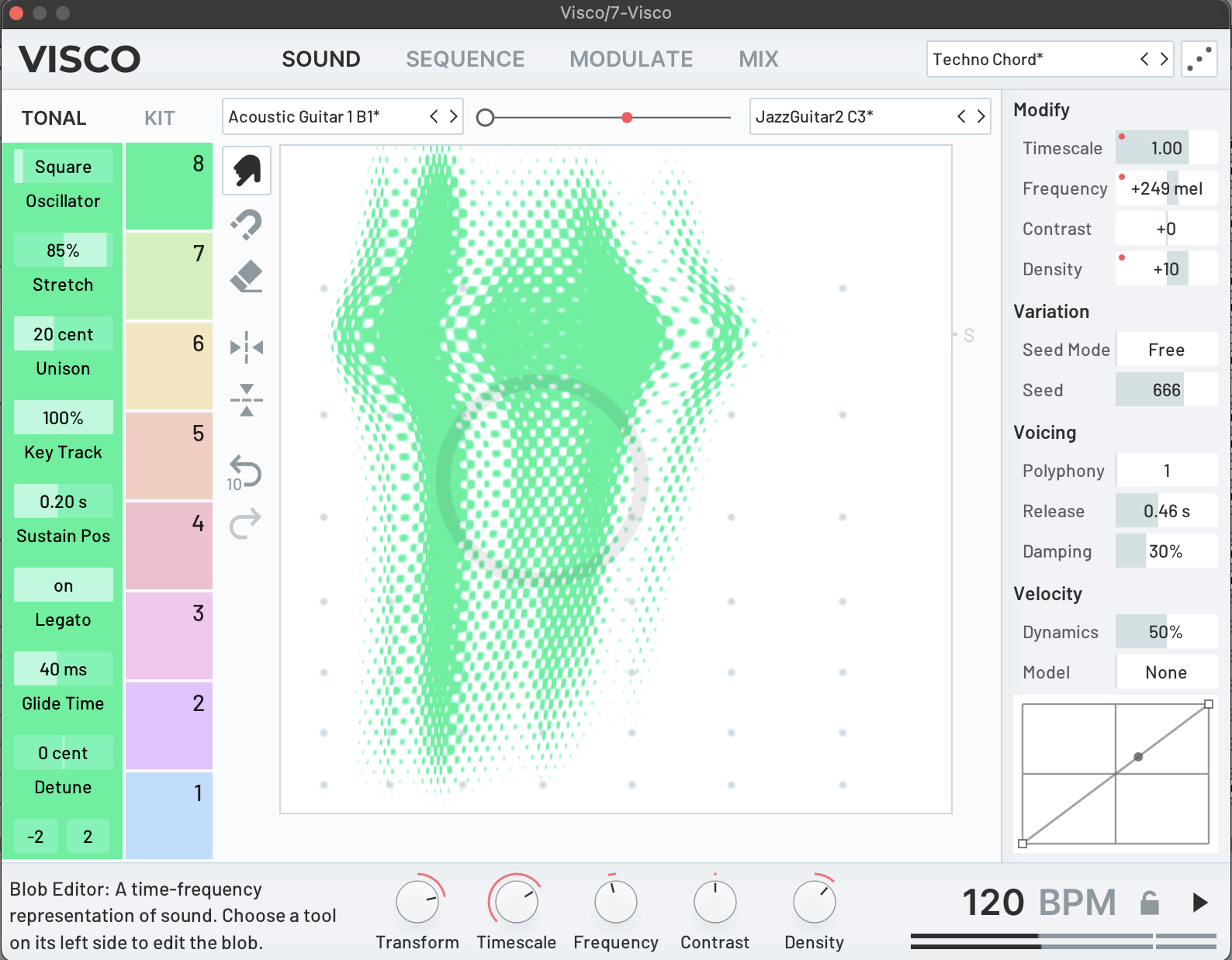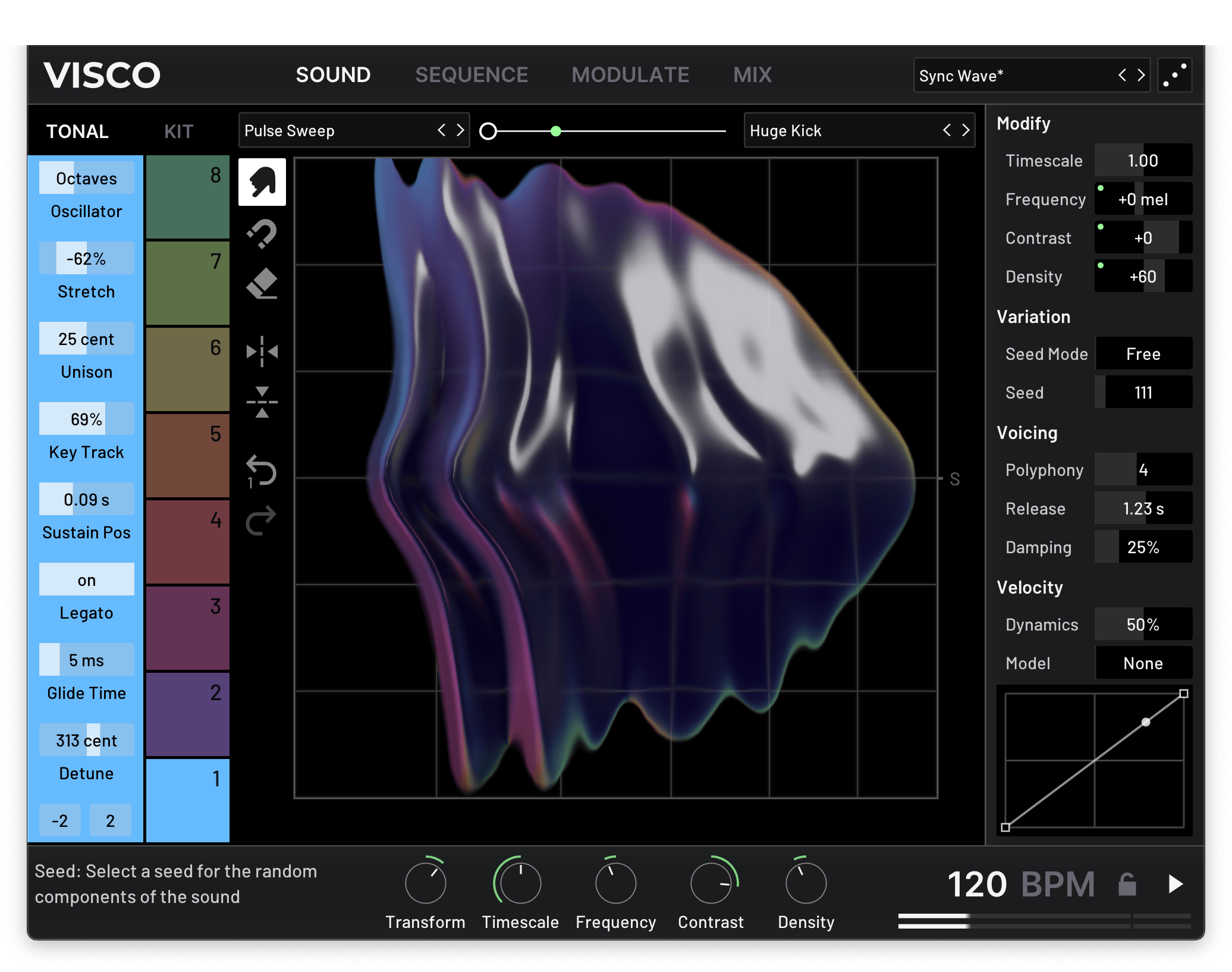Visco 2.0 turns the boundary-pushing drum machine into a polysynth – and makes one of last year’s best plugins even more of a must-try
Forever89’s free update adds a new tonal engine to its resynthesis-powered drum machine – we get hands-on
Visco, the debut plugin from Berlin developer Forever89, launched in 2024 and over the past year has become one of our favourite sound design tools.
At its core, Visco is based around a fairly standard drum machine setup – it has eight tracks that use samples as their primary source, accompanied by a grid-based sequencer, mixer window, modulators and effects.
Under the surface, however, Visco does some very interesting things. Rather than simply playing back the samples themselves, the plugin uses a method its developer calls ‘sample modelling’ to resynthesize each sound so that it can be manipulated and modulated.
These resynthesized sounds can be shaped using a variety of visual manipulation tools, macros and modulators in order to create unusual timbres and sounds that morph in both shape and frequency.
Now Forever89 has released a free v2 update, which adds some significant new capabilities to the plugin, aimed at creating pitched sounds as well as percussive ones.
Synth shaping
Visco 2.0 adds a new tonal mode, which reconfigures the drum machine’s sound engine to allow it to function as a synthesizer. When switched on, rather than playing or sequencing multiple sounds across its eight tracks, Visco instead plays a single sound back chromatically using up-to eight voices of polyphony.
The basic setup of the tonal sound engine is the same as that of its percussive counterpart. Two source samples can be loaded into the A and B slots of the resynthesis engine, which provide the core characteristics of the morphable ‘blob’ used to shape the sound in real time.
Want all the hottest music and gear news, reviews, deals, features and more, direct to your inbox? Sign up here.

The key difference here is that the sound is also processed via an oscillator section. Visco’s synth engine has 12 oscillator styles, ranging from traditional saw and square wave shapes to chord oscillators, a Metallic oscillator, organ-style DrawBar mode and more.
In the oscillator section, users can also ‘stretch’ the sound to alter the distribution of harmonics, apply detuned unison, as well as adjust parameters such as sustain position, glide and detuning.
I've been playing around with the new version for the past week, and this new engine is a fantastic addition to the plugin.
Compared to using Visco in percussive mode, the resynthesis engine tends to capture a little less of the characteristics of the loaded sample, depending on the source sound used.
Insert a synth one-shot or tonal percussive element, and Visco will often do a good job of replicating the characteristics of the sound, but more left-field or non-synthesized tones often produce characteristics that have more in common with the oscillator mode and just maintain the approximate shape of the source sample.
This is hardly a problem though, because even when it doesn’t generate the exact tone you were expecting, Visco’s engine almost always throws up something interesting. This is even more true when you factor in the existing controls carried over from the percussive mode.
The visual editing tools allow users to shape the frequency and timing of the sound in real-time. Perhaps more powerful is the bank of five macros along the bottom of the interface, which can be used to transform a sound between its A and B states, as well as morph its frequency content, duration, noise density and more.
As with its drum capabilities, the key to making the most of Visco lies in pairing these capabilities with its comprehensive modulation and sequencing tools. A range of flexible envelopes, LFOs and randomisation tools make it easy to add movement to a sound, allowing the tonal engine to create synthetic tones that feel like they’re endlessly shifting and morphing.

Although it’s possible to get straightforward melodic sounds out of Visco’s tonal engine – as demonstrated by some decent presets – as with its percussive mode, it feels like you’re missing the point of Visco if you’re not pushing it to its extremes.
This isn’t the best engine setup for precisely shaping sounds based around a fixed plan. There’s little in the way of precise control over a sound’s attack, for instance. But for boundary-pushing experimentation, Visco is shaping up to be one of the best tools around.
The synth sounds on offer here remind me a lot of those created by Synplant 2 – another excellent experimental tool that makes use of resynthesis technology. As with Synplant, the best results created by Visco are often the ones that don’t come out quite as intended.
I was already thoroughly won over by Visco as a drum machine, but its new synthesis mode adds an extra layer of sound shaping potential. Coupled with its powerful macro setup and flexible modulators, this is a must for lovers of cutting-edge sounds.
Along with the new capabilities, v2.0 also add the ability to import FLAC files as well as a variety of stability and performance improvements.
Visco 2.0 is out now as a free download for existing users. New users can currently pick up the plugin for a limited-time price of $99. Head to the Forever89 site for more.
I'm the Managing Editor of Music Technology at MusicRadar and former Editor-in-Chief of Future Music, Computer Music and Electronic Musician. I've been messing around with music tech in various forms for over two decades. I've also spent the last 10 years forgetting how to play guitar. Find me in the chillout room at raves complaining that it's past my bedtime.
You must confirm your public display name before commenting
Please logout and then login again, you will then be prompted to enter your display name.
